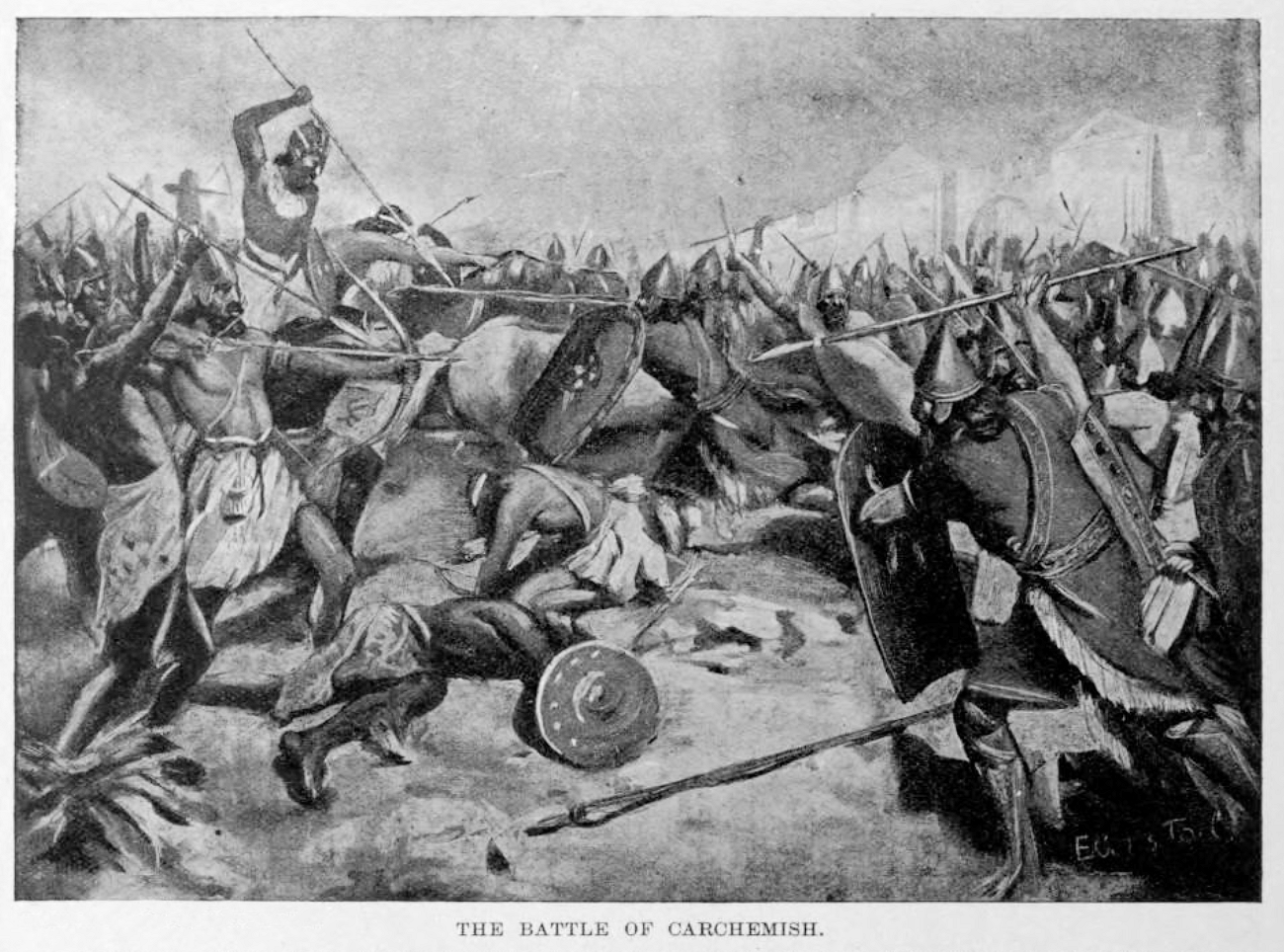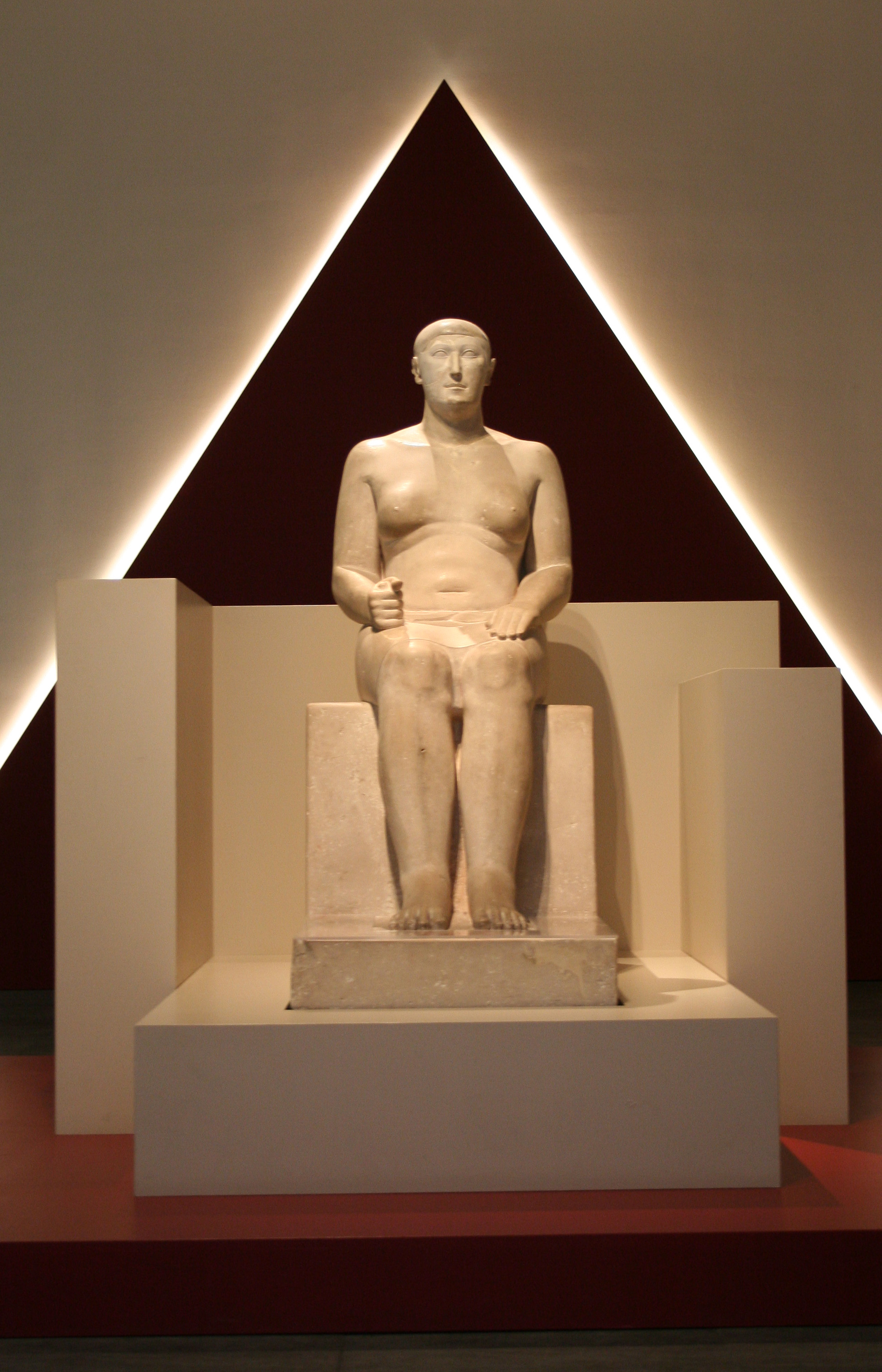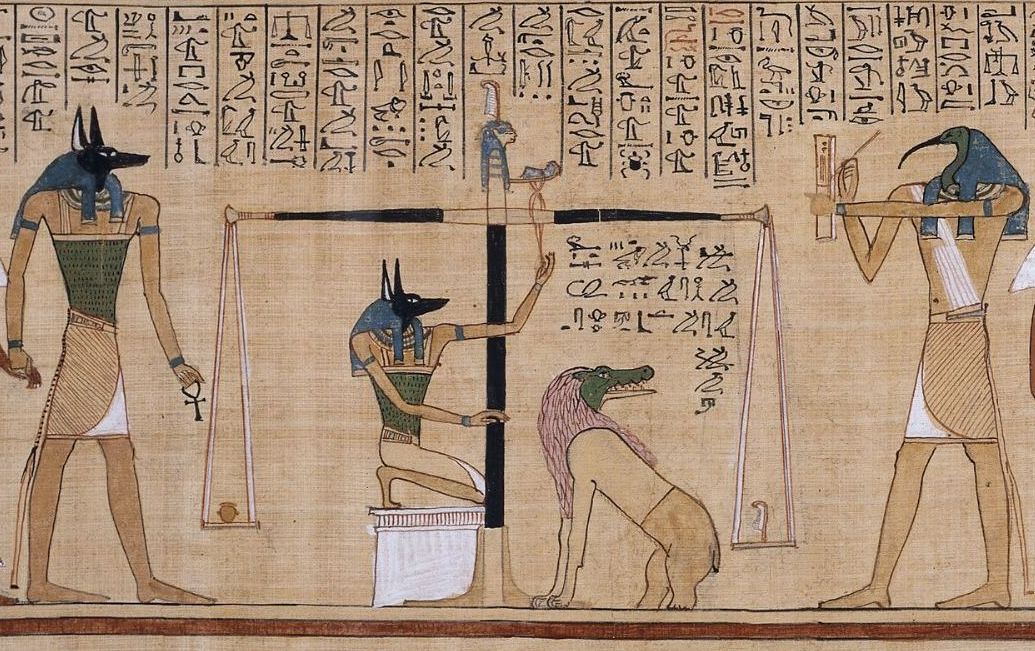|
Bakenrenef (vizier)
Bakenrenef or Bakenranef was an ancient Egyptian Vizier of the North (Lower Egypt) during the reign of Psamtik I (664 – 610 BC) of the 26th Dynasty. Like Khaemwaset several centuries before, he bore the title of ''Iunmutef'', ''“Cleaner of the Great House”''. His father was a mayor called Padineit, while his mother was a certain Tageb.Diana Alexandra Pressl, ''Beamte und Soldaten: Die Verwaltung in der 26. Dynastie in Ägypten (664 - 525 v. Chr.)'', Verlag Peter Lang, Frankfurt am Main 1998, pp.168-70 and references therein. Bakenrenef is mainly known for his large rock tomb in Saqqara and its reliefs depicting scenes from the ''Book of the Dead'' and from the ''Amduat''. The tomb was later reused for other burials during the 30th Dynasty. The decoration of the tomb was still largely intact when the Lepsius expedition discovered and copied it, in the middle of the 19th century. Since then, the grave has been vandalized: most reliefs were torn away from the walls and sold t ... [...More Info...] [...Related Items...] OR: [Wikipedia] [Google] [Baidu] |
26th Dynasty
The Twenty-sixth Dynasty of Egypt (notated Dynasty XXVI, alternatively 26th Dynasty or Dynasty 26) dynasty was the last native dynasty to rule Egypt before the Persian conquest in 525 BC (although others followed). The dynasty's reign (664–525 BC) is also called the Saite Period after the city of Sais, where its pharaohs had their capital, and marks the beginning of the Late Period of ancient Egypt.Aidan Dodson, Dyan Hilton. ''The Complete Royal Families of Ancient Egypt''. The American University in Cairo Press, London 2004 History This dynasty traced its origins to the Twenty-fourth Dynasty. Psamtik I was probably a descendant of Bakenranef. Following the Assyrian conquest of Egypt by the Neo-Assyrian Empire during the reigns of Taharqa and Tantamani, and the subsequent collapse of the Twenty-fifth Dynasty of Egypt, Psamtik I was recognized as sole king over all of Egypt. Psamtik formed alliances with King Gyges of Lydia, who sent him mercenaries from Caria and ancient Greec ... [...More Info...] [...Related Items...] OR: [Wikipedia] [Google] [Baidu] |
Psamtik I
Wahibre Psamtik I ( Ancient Egyptian: ) was the first pharaoh of the Twenty-sixth Dynasty of Egypt, the Saite period, ruling from the city of Sais in the Nile delta between 664–610 BC. He was installed by Ashurbanipal of the Neo-Assyrian Empire, against the Kushite rulers of the Twenty-fifth Dynasty, but later gained more autonomy as the Assyrian Empire declined. Name The Egyptian name , pronounced as , was a short form of , meaning "the man of (the Libyan deity) Meṯek." His name was rendered by the Assyrians as Pishamilki (Akkadian: ), by the Ancient Greeks as (), and by the Romans as . Psamtik was also called Nabu-shezibanni (Akkadian: and ), meaning "O Nabu, save me!" by the Assyrians. Background In 671 BCE, the Assyrian king Esarhaddon invaded Egypt. This invasion was directed against the Kushite rulers of the Twenty-fifth Dynasty of Egypt, who had been in control of Upper Egypt, rather than against the native Egyptian rulers. The Assyrians created an ... [...More Info...] [...Related Items...] OR: [Wikipedia] [Google] [Baidu] |
Vizier (Ancient Egypt)
The vizier () was the highest official in ancient Egypt to serve the pharaoh (king) during the Old, Middle, and New Kingdoms. Vizier is the generally accepted rendering of ancient Egyptian , etc., among Egyptologists. The ''Instruction of Rekhmire'' (''Installation of the Vizier''), a New Kingdom text, defines many of the duties of the , and lays down codes of behavior. The viziers were often appointed by the pharaoh. During the 4th Dynasty and early 5th Dynasty, viziers were exclusively drawn from the royal family; from the period around the reign of Neferirkare Kakai onwards, they were chosen according to loyalty and talent or inherited the position from their fathers. Responsibilities The viziers were appointed by the pharaohs and often belonged to a pharaoh's family. The vizier's paramount duty was to supervise the running of the country, much like a prime minister. At times this included small details such as sampling the city's water supply. All other lesser supervisor ... [...More Info...] [...Related Items...] OR: [Wikipedia] [Google] [Baidu] |
Lower Egypt
Lower Egypt ( ar, مصر السفلى '; ) is the northernmost region of Egypt, which consists of the fertile Nile Delta between Upper Egypt and the Mediterranean Sea, from El Aiyat, south of modern-day Cairo, and Dahshur. Historically, the Nile River split into seven branches of the delta in Lower Egypt. Lower Egypt was divided into nomes and began to advance as a civilization after 3600 BC. Today, it contains two major channels that flow through the delta of the Nile River – Mahmoudiyah Canal (ancient Agathos Daimon) and Muways Canal (, "waterway of Moses"). Name In Ancient Egyptian, Lower Egypt was as ''mḥw'' and means ''"north"''. Later on, during Antiquity and the Middle Ages, Greeks and Romans called it ''Κάτω Αἴγυπτος'' or ''Aegyptus Inferior'' both meaning "Lower Egypt", but Copts carried on using the old name related to the north – ''Tsakhet'' () or ''Psanemhit'' () meaning the "Northern part". It was further divided into number of re ... [...More Info...] [...Related Items...] OR: [Wikipedia] [Google] [Baidu] |
Khaemwaset
Prince Khaemweset (also translated as Khamwese, Khaemwese or Khaemwaset or Setne Khamwas) was the fourth son of Ramesses II and the second son by his queen Isetnofret. His contributions to Egyptian society were remembered for centuries after his death.Aidan Dodson & Dyan Hilton, ''The Complete Royal Families of Ancient Egypt'', Thames & Hudson (2004), p. 170-171 Khaemweset has been described as "the first Egyptologist" due to his efforts in identifying and restoring historic buildings, tombs and temples. Life According to historian Miriam Lichtheim: :Here I should like to stress that Prince Setne Khamwas, the hero of the two tales named for him, was a passionate antiquarian. The historical prince Khamwas, was the fourth son of King Ramses II, had been high priest of Ptah at Memphis and administrator of all the Memphite sanctuaries. In that capacity he had examined decayed tombs, restored the names of their owners, and renewed their funerary cults. Posterity had transmitted his ... [...More Info...] [...Related Items...] OR: [Wikipedia] [Google] [Baidu] |
Saqqara
Saqqara ( ar, سقارة, ), also spelled Sakkara or Saccara in English , is an Egyptian village in Giza Governorate, that contains ancient burial grounds of Egyptian royalty, serving as the necropolis for the ancient Egyptian capital, Memphis. Saqqara contains numerous pyramids, including the Step pyramid of Djoser, sometimes referred to as the Step Tomb, and a number of mastaba tombs. Located some south of modern-day Cairo, Saqqara covers an area of around . Saqqara contains the oldest complete stone building complex known in history, the Pyramid of Djoser, built during the Third Dynasty. Another sixteen Egyptian kings built pyramids at Saqqara, which are now in various states of preservation. High officials added private funeral monuments to this necropolis during the entire Pharaonic period. It remained an important complex for non-royal burials and cult ceremonies for more than 3,000 years, well into Ptolemaic and Roman times. North of the area known as Saqqara ... [...More Info...] [...Related Items...] OR: [Wikipedia] [Google] [Baidu] |
Book Of The Dead
The ''Book of the Dead'' ( egy, 𓂋𓏤𓈒𓈒𓈒𓏌𓏤𓉐𓂋𓏏𓂻𓅓𓉔𓂋𓅱𓇳𓏤, ''rw n(y)w prt m hrw(w)'') is an ancient Egyptian funerary text generally written on papyrus and used from the beginning of the New Kingdom (around 1550 BCE) to around 50 BCE. The original Egyptian name for the text, transliterated ''rw nw prt m hrw'', is translated as ''Book of Coming Forth by Day'' or ''Book of Emerging Forth into the Light''. "Book" is the closest term to describe the loose collection of texts consisting of a number of magic spells intended to assist a dead person's journey through the '' Duat'', or underworld, and into the afterlife and written by many priests over a period of about 1,000 years. Karl Richard Lepsius introduced for these texts the German name ''Todtenbuch'' (modern spelling ''Totenbuch''), translated to English as Book of the Dead. The ''Book of the Dead'', which was placed in the coffin or burial chamber of the deceased, was part of a tr ... [...More Info...] [...Related Items...] OR: [Wikipedia] [Google] [Baidu] |
Amduat
The Amduat ( egy, jmj dwꜣt, literally "That Which Is In the Afterworld", also translated as "Text of the Hidden Chamber Which is in the Underworld" and "Book of What is in the Underworld"; ar, كتاب الآخرة, Kitab al-Akhira) is an important ancient Egyptian funerary text of the New Kingdom of Egypt. Like many funerary texts, it was found written on the inside of the pharaoh's tomb for reference. Unlike other funerary texts, however, it was reserved only for pharaohs (until the Twenty-first Dynasty almost exclusively) or very favored nobility.Hornung (1999), p.27 It tells the story of Ra, the Egyptian sun god who travels through the underworld, from the time when the sun sets in the west and rises again in the east. It is said that the dead Pharaoh is taking this same journey, ultimately to become one with Ra and live forever. The underworld is divided into twelve hours of the night, each representing different allies and enemies for the Pharaoh/sun god to encounter ... [...More Info...] [...Related Items...] OR: [Wikipedia] [Google] [Baidu] |
30th Dynasty
The Thirtieth Dynasty of Egypt (notated Dynasty XXX, alternatively 30th Dynasty or Dynasty 30) is usually classified as the fifth Dynasty of the Late Period of ancient Egypt. It was founded after the overthrow of Nepherites II in 380 BC by Nectanebo I, and was disestablished upon the invasion of Egypt by the Achaemenid emperor Artaxerxes III in 343 BC. This is the final native dynasty of ancient Egypt; after the deposition of Nectanebo II, Egypt fell under foreign domination. History Nectanebo I had gained control of all of Egypt by November of 380 BC, but spent much of his reign defending his kingdom from Persian reconquest with the occasional help of Sparta or Athens. In 365 BC, Nectanebo made his son, Teos, co-king and heir, and until his death, in 363 BC father and son reigned together. After his father's death, Teos invaded the Persian territories of modern Syria and Israel and was beginning to meet with some successes when he lost his throne due to the machinations of ... [...More Info...] [...Related Items...] OR: [Wikipedia] [Google] [Baidu] |
Karl Richard Lepsius
Karl Richard Lepsius ( la, Carolus Richardius Lepsius) (23 December 181010 July 1884) was a pioneering Prussian Egyptologist, linguist and modern archaeologist. He is widely known for his magnum opus '' Denkmäler aus Ägypten und Äthiopien''. Early life Karl Richard Lepsius was the son of Karl Peter Lepsius, a classical scholar from Naumburg, and his wife Friederike (née Gläser), who was the daughter of composer Carl Ludwig Traugott Gläser. The family name was originally "Leps" and had been Latinized to "Lepsius" by Karl's paternal great-grandfather Peter Christoph Lepsius. He was born in Naumburg on the Saale, Saxony. He studied Greek and Roman archaeology at the University of Leipzig (1829–1830), the University of Göttingen (1830–1832), and the Frederick William University of Berlin (1832–1833). After receiving his doctorate following his dissertation ''De tabulis Eugubinis'' in 1833, he travelled to Paris, where he attended lectures by the French classic ... [...More Info...] [...Related Items...] OR: [Wikipedia] [Google] [Baidu] |
Limestone
Limestone ( calcium carbonate ) is a type of carbonate sedimentary rock which is the main source of the material lime. It is composed mostly of the minerals calcite and aragonite, which are different crystal forms of . Limestone forms when these minerals precipitate out of water containing dissolved calcium. This can take place through both biological and nonbiological processes, though biological processes, such as the accumulation of corals and shells in the sea, have likely been more important for the last 540 million years. Limestone often contains fossils which provide scientists with information on ancient environments and on the evolution of life. About 20% to 25% of sedimentary rock is carbonate rock, and most of this is limestone. The remaining carbonate rock is mostly dolomite, a closely related rock, which contains a high percentage of the mineral dolomite, . ''Magnesian limestone'' is an obsolete and poorly-defined term used variously for dolomite, for lime ... [...More Info...] [...Related Items...] OR: [Wikipedia] [Google] [Baidu] |






.jpg)
